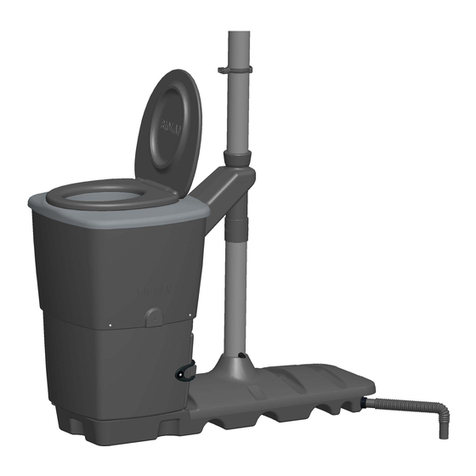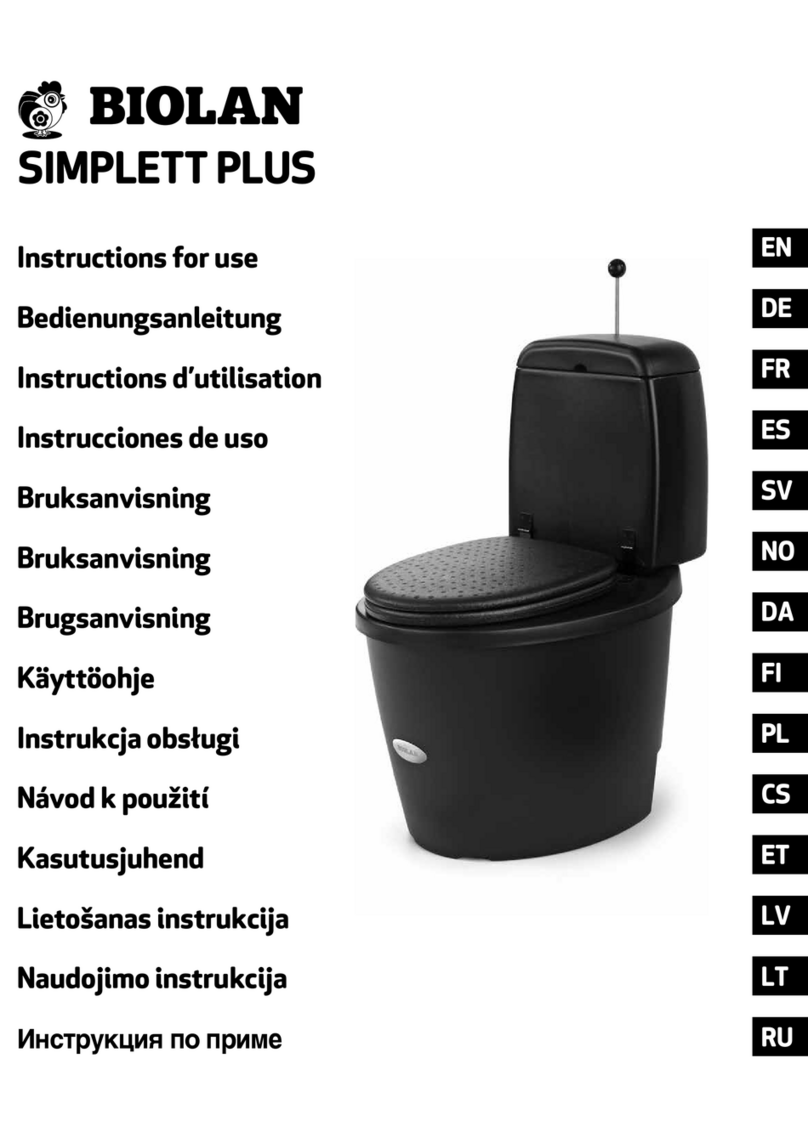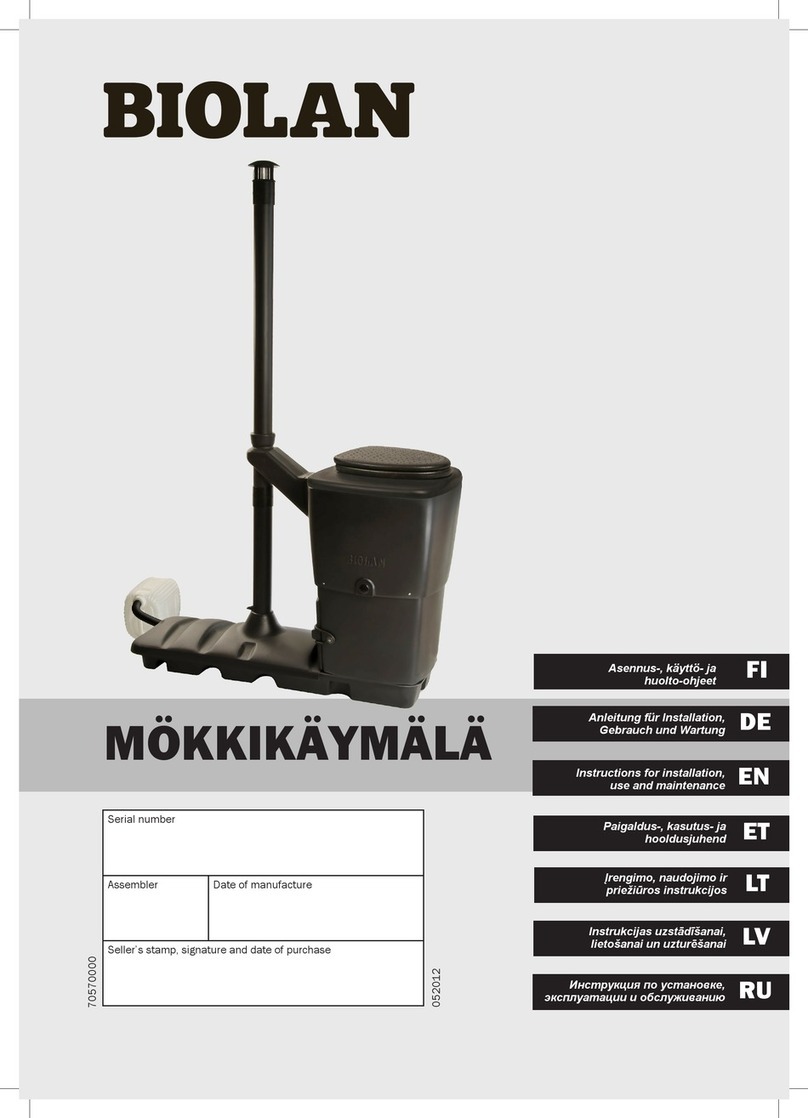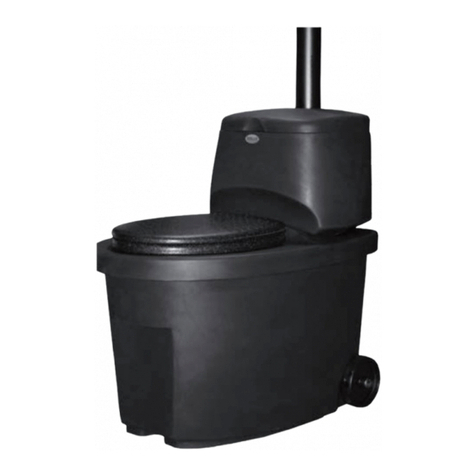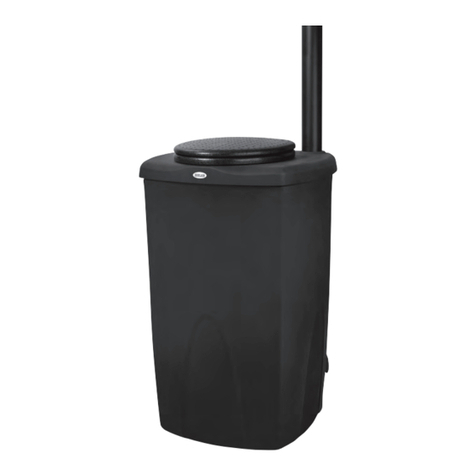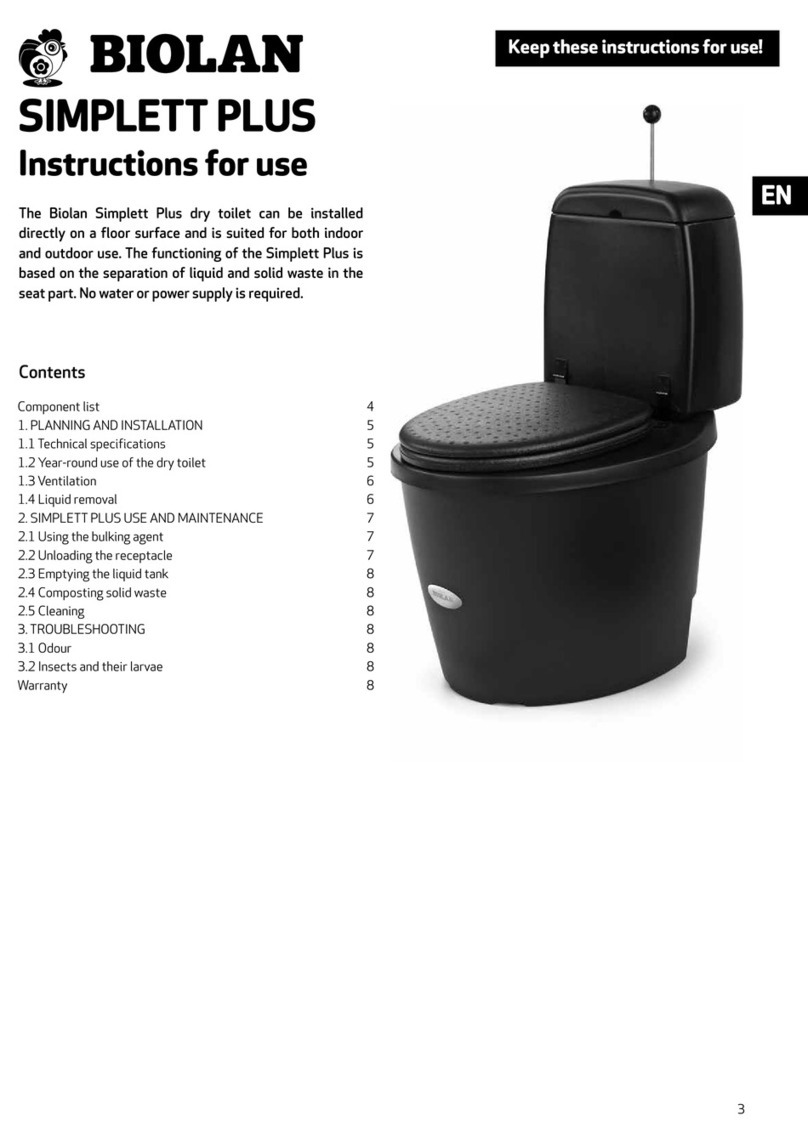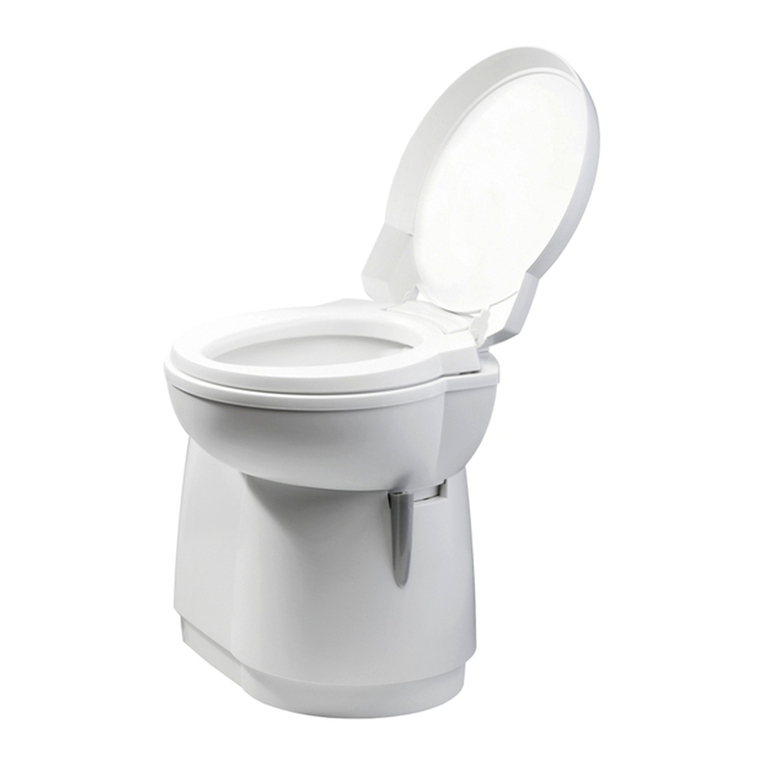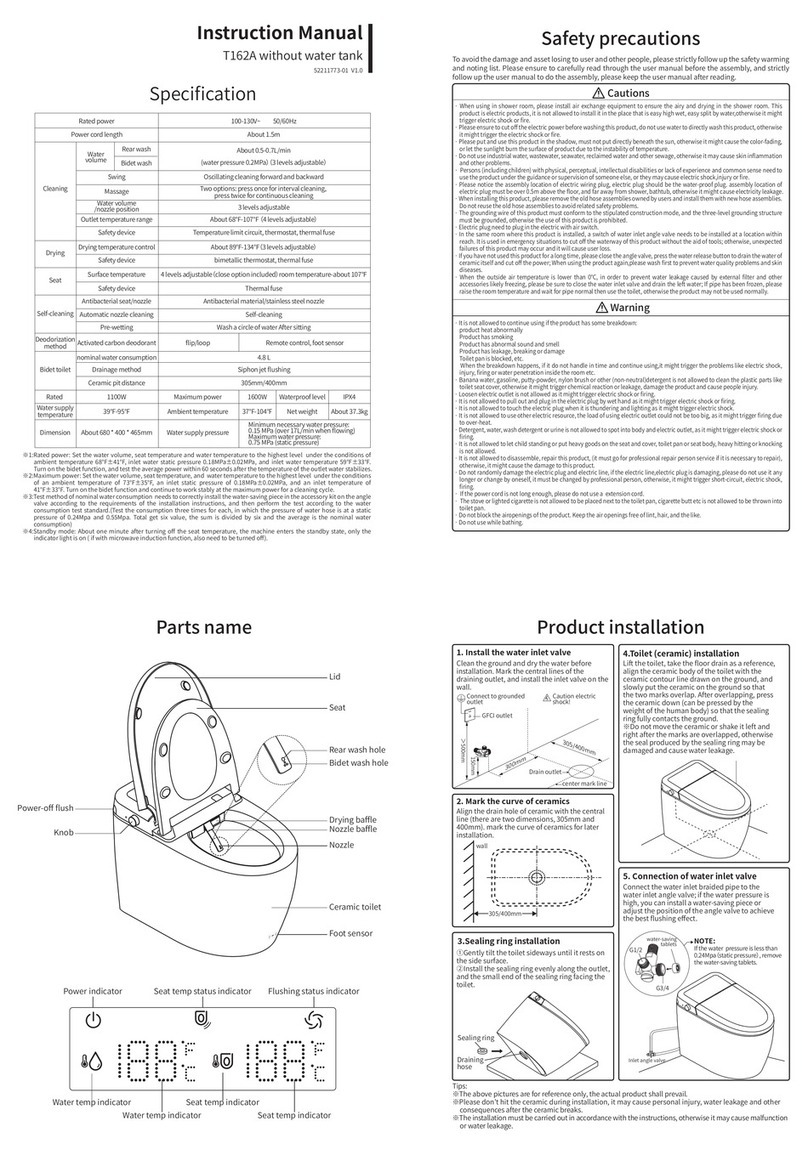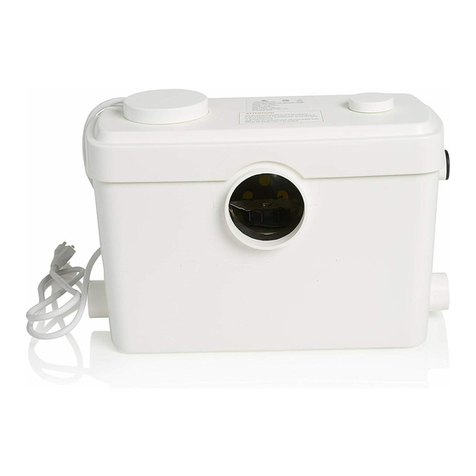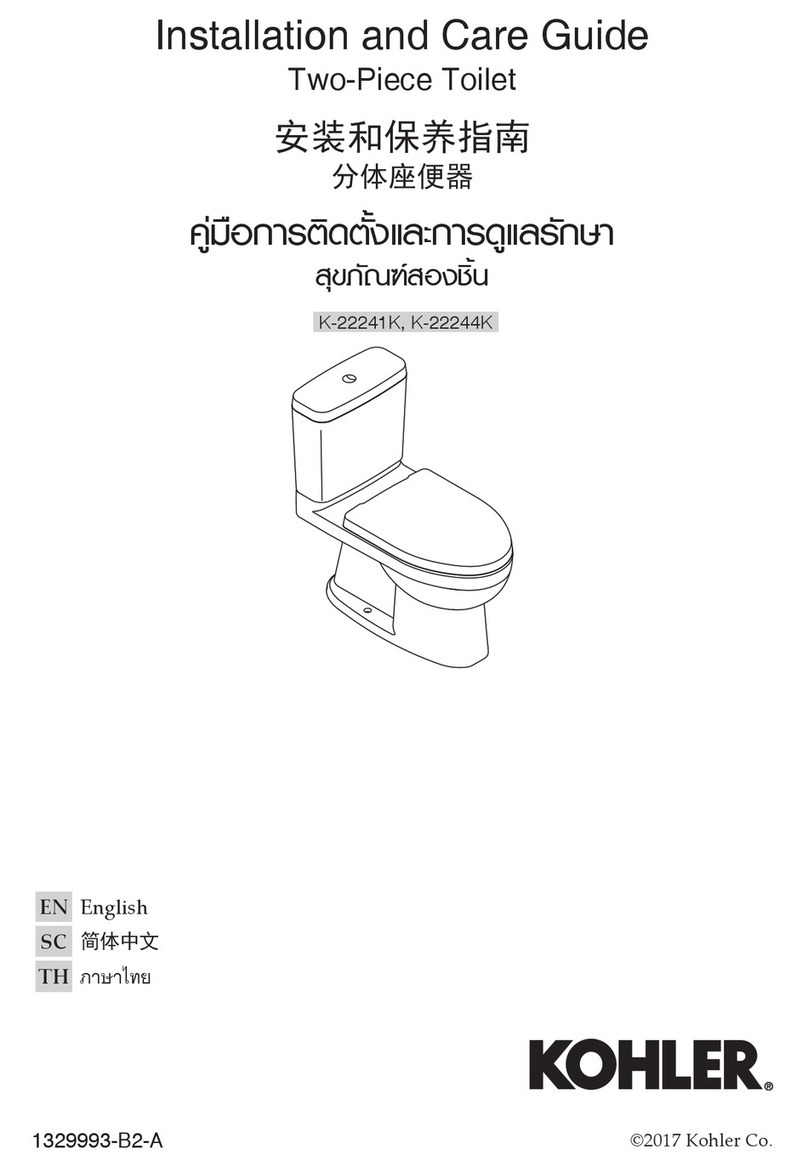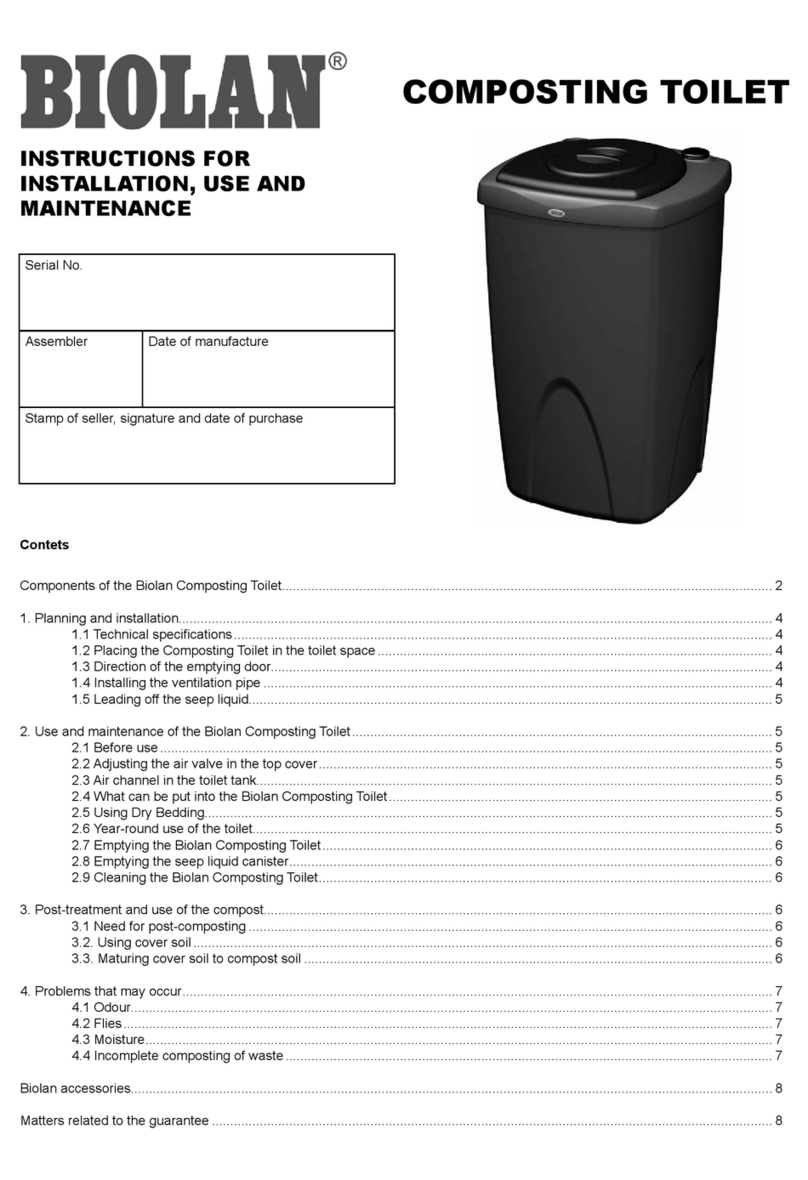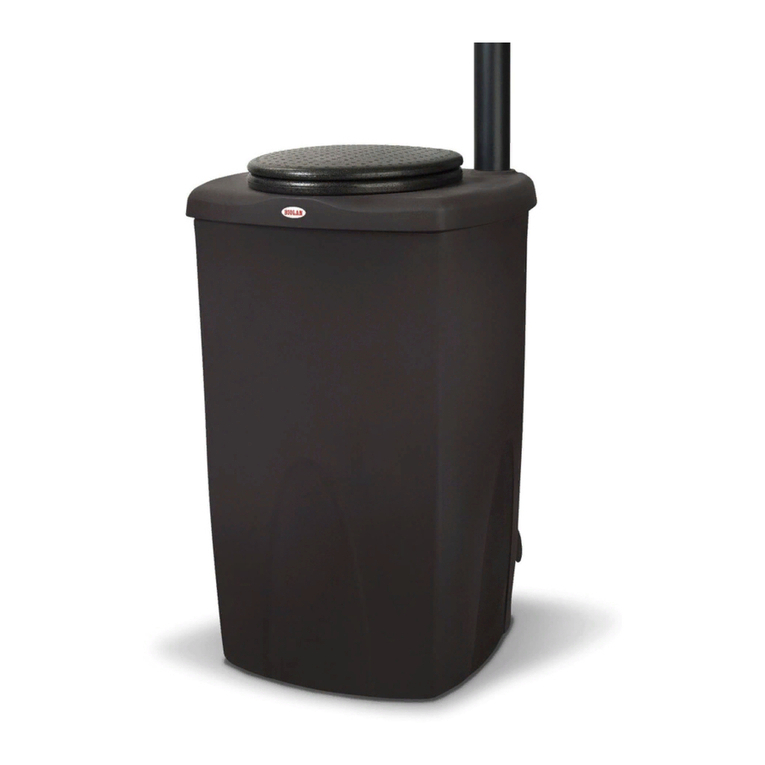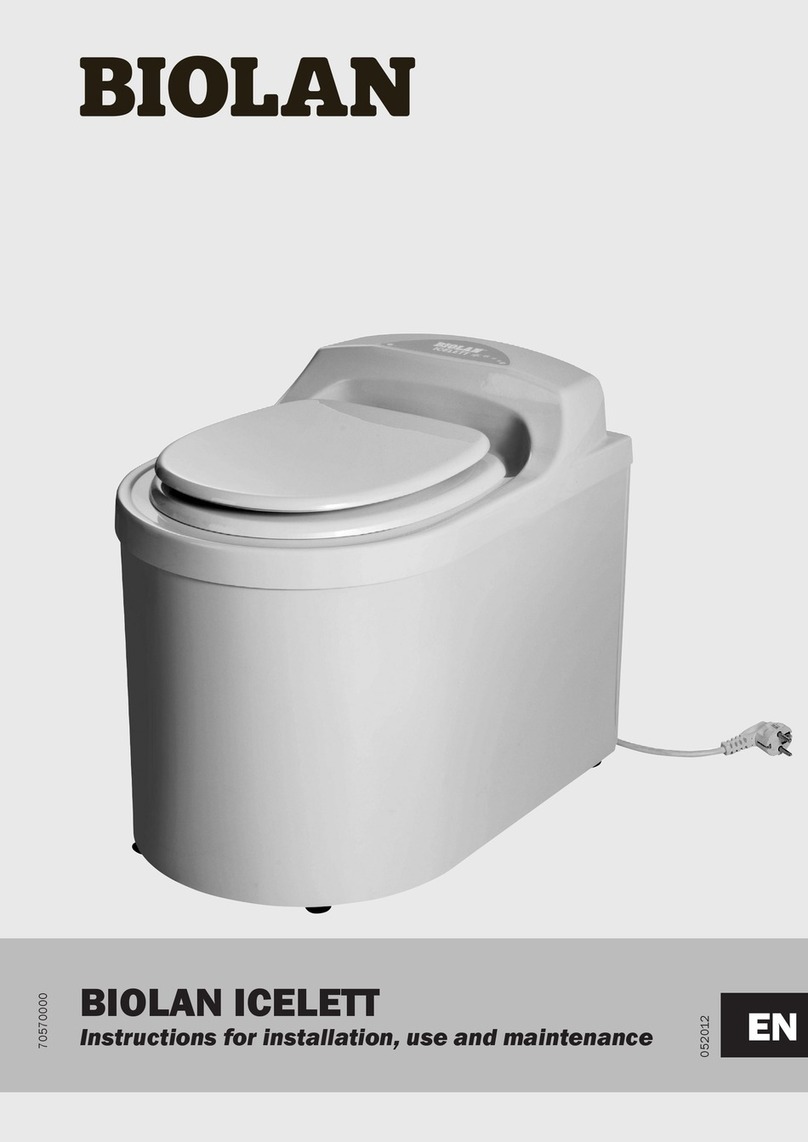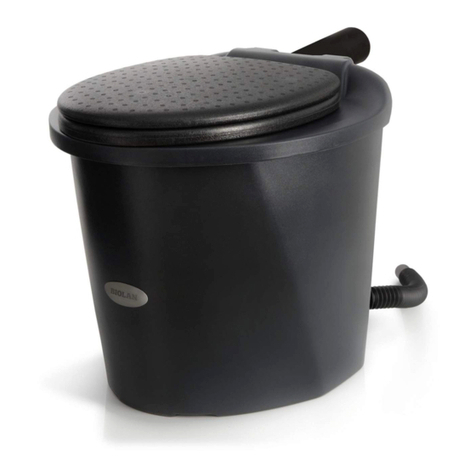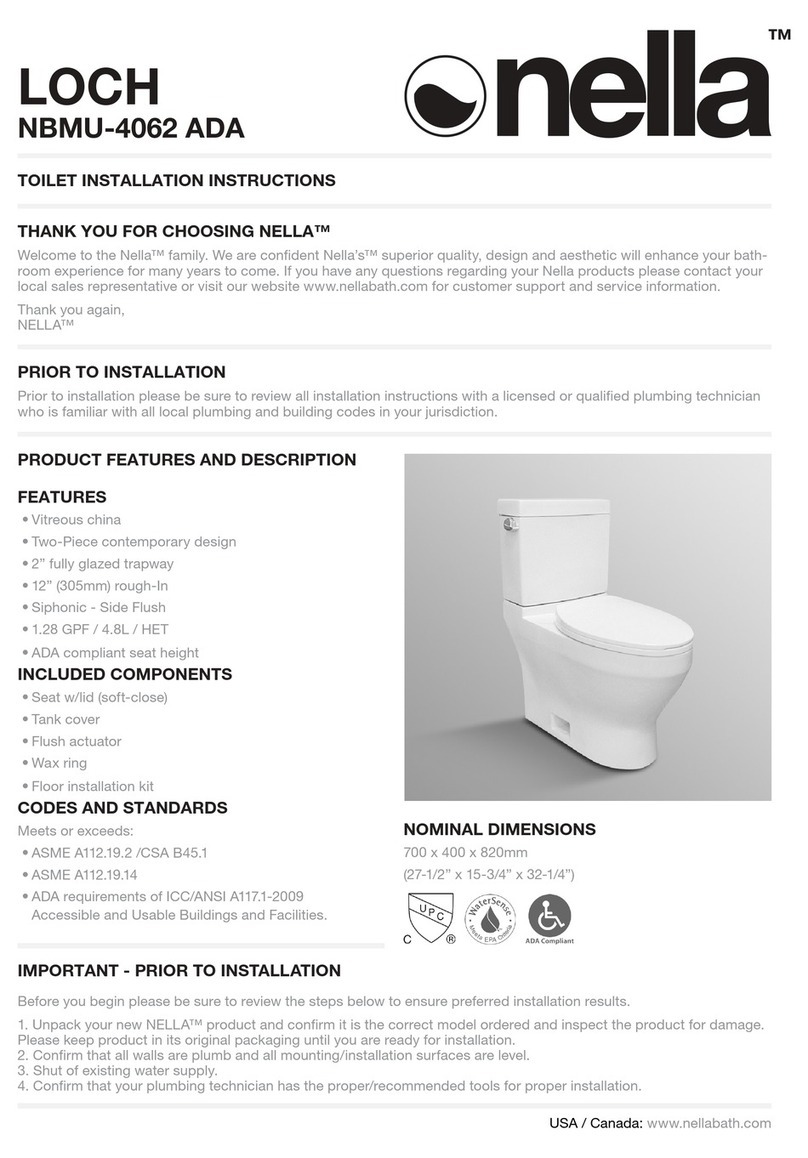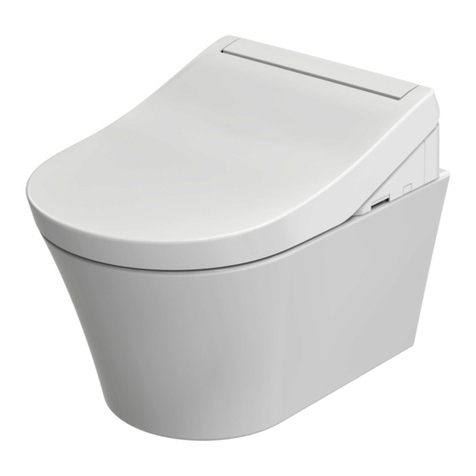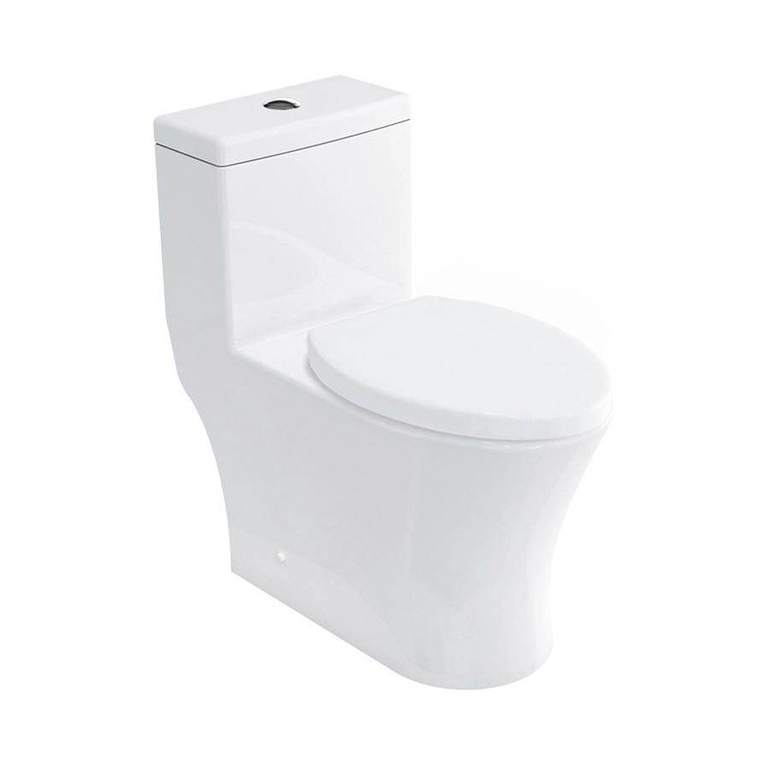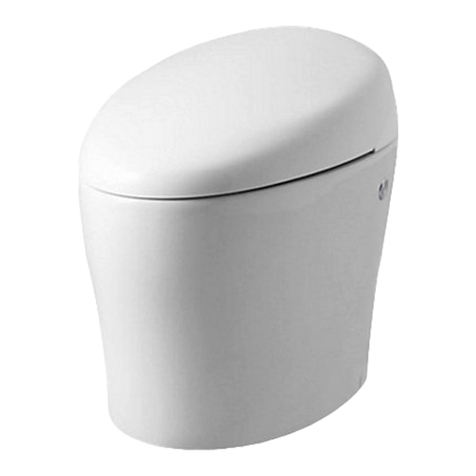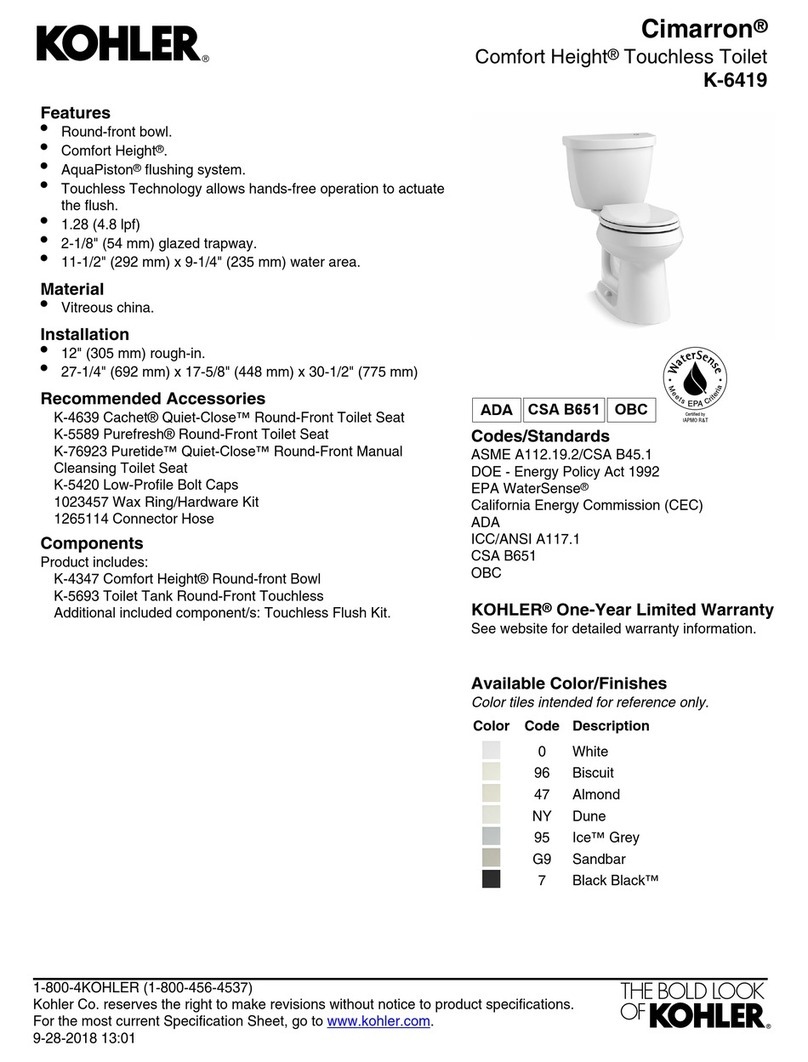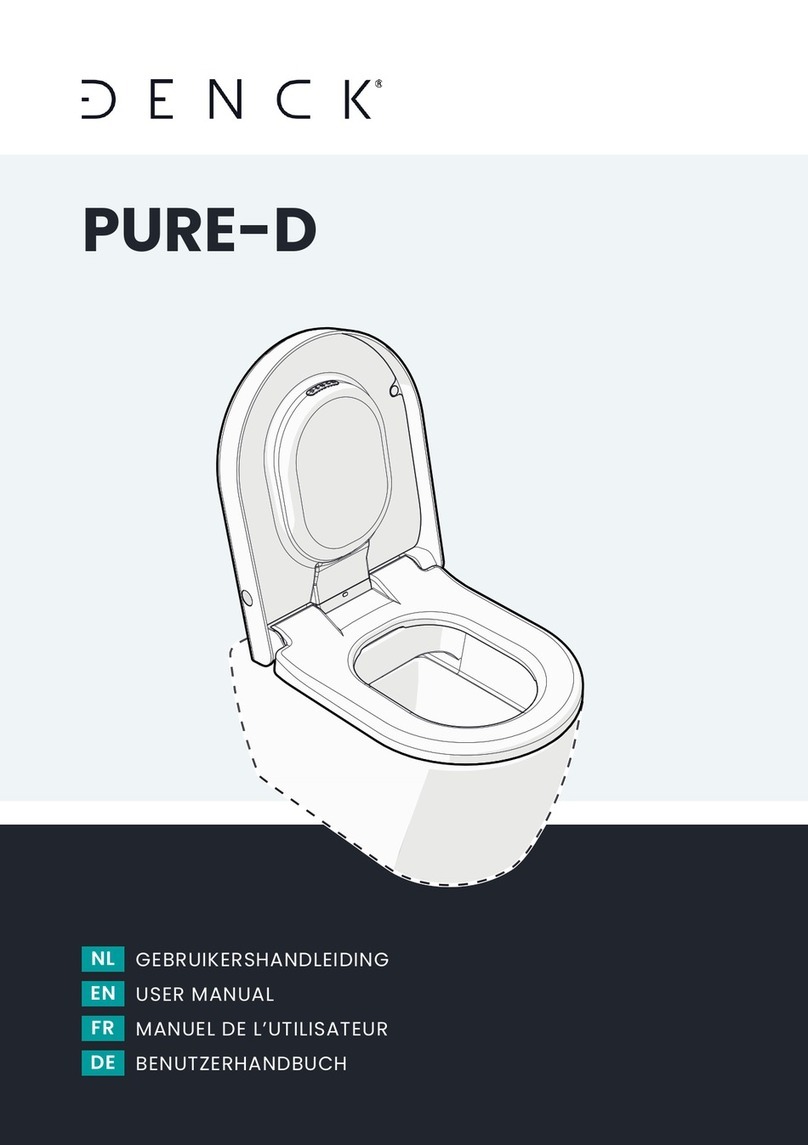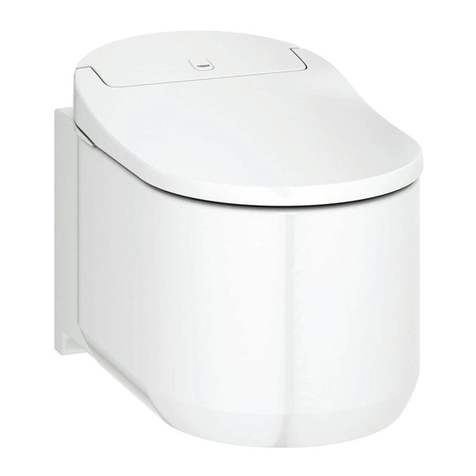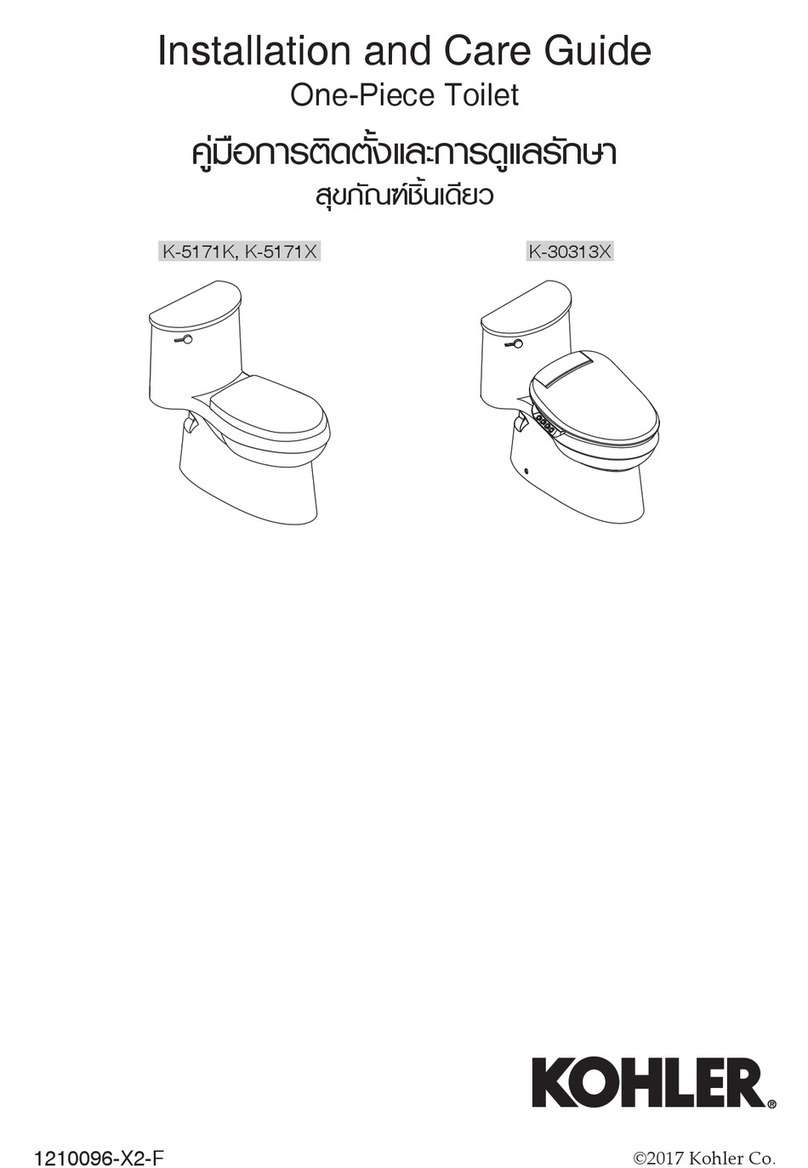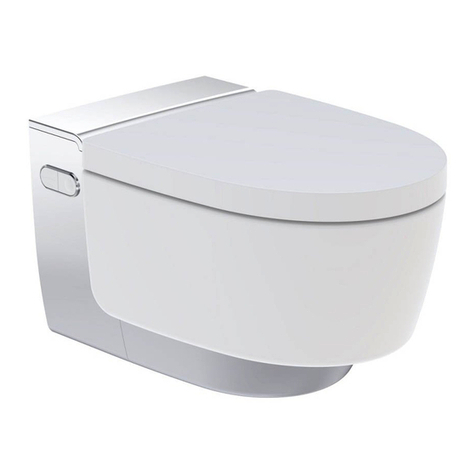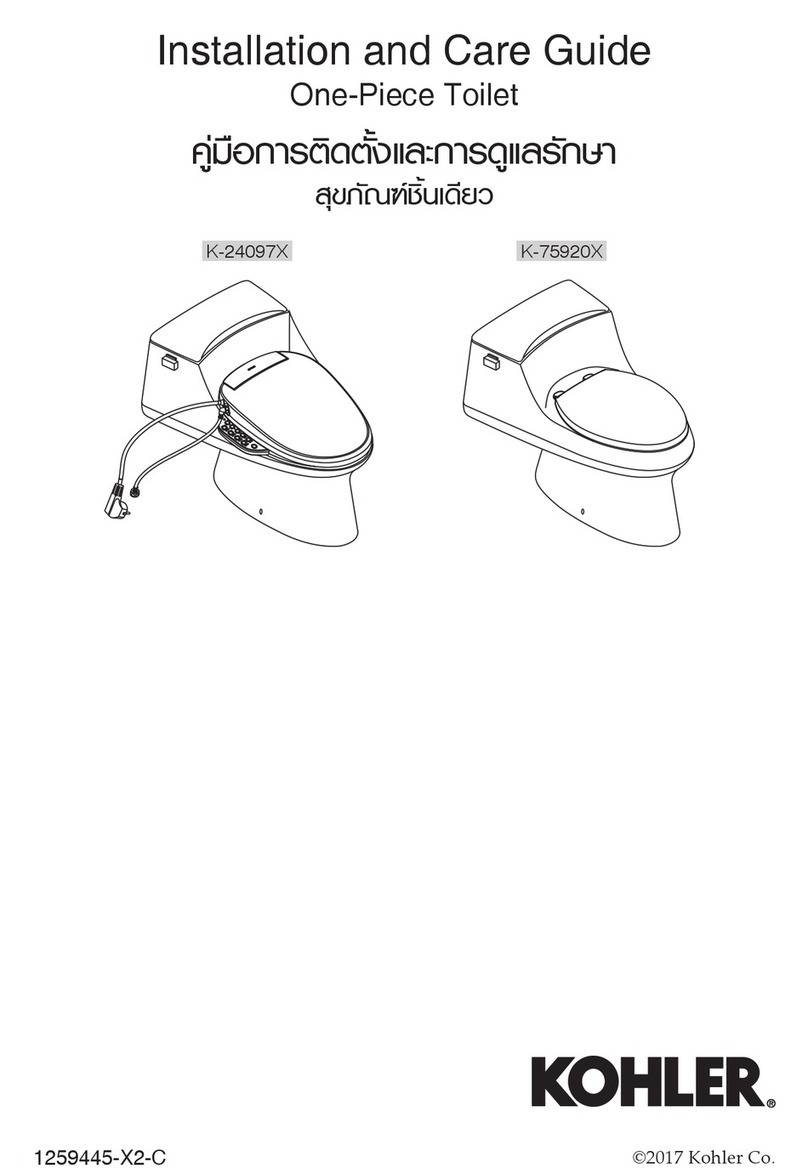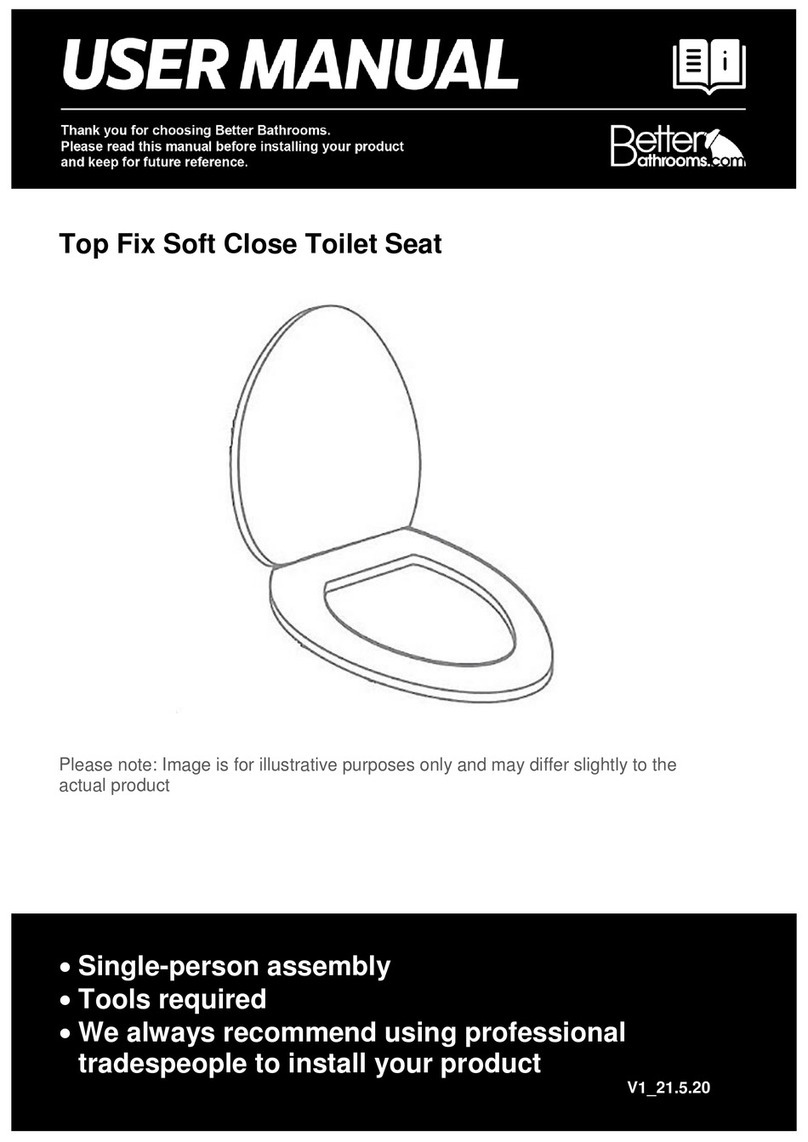
EN-6
3. Post-treatment and use of
the compost
3.1 Need for post-composting
Compost soil changes and develops constantly. It should be used
in a different manner in different stages of its development. Typi-
cally compost soil is divided into two groups based on its maturity:
cover soil and compost soil.
In general, the compost mass emptied from the Composting Toilet
Biolaneco has already matured to the cover soil stage. Because of
seep liquid leaching through the compost, the compost is recom-
mended exclusively for ornamental plants.
If you intend to use it for a vegetable plot, post-compost it for about
a year in order to exterminate microbes. During post-composting
the cover soil matures into compost soil. Correctly used, the com-
post soil is excellent soil conditioner and fertiliser to plants.
3.2 Using cover soil
By cover soil we mean the semi-mature compost mass. At this
stage, decomposing has reached a level where toilet waste and
possible food waste have already decomposed. Harder wood
matter and, for example, eggshells and citrus fruit peels may not
yet have completely decomposed; thus the cover soil has quite a
rough look. In the Composting Toilet Biolaneco, this stage is reached
in 5 to 8 weeks. The semi-mature compost soil may still possess
substances that prevent growth. Hence it must not be used as
growing substrate. The cover soil, i.e. the half-mature compost, is
not harmful to the plants, if it is spread to cover the planting area
of ornamental plants as a layer of a few centimetres. A suitable
thickness for the layer to be applied is about 2-5 cm.
3.3 Maturing cover soil to compost
soil
If the cover soil is post-composted, it will mature into proper com-
post soil. You can post-compost the cover soil, for example, in a
stack or in a non-insulated composter, because maturing compost
soil does not heat up any longer. For post-composting, it is advis-
able to use a composter with a cover, such as (e.g.) the Biolan
Garden Composter (see Accessories on page EN-8) or the Bio-
lan Stone Composter (see Accessories on page EN-8) to prevent
rainwaterfromushingawaythewater-solublenutrients.Inabout
a year, the compost matures into compost soil of a dark brown
colour and aggregate structure, from which source substances,
except for bigger wood splinters, can no longer be distinguished.
3.4 Testing the maturity of the
compost soil at home
The maturity of the compost soil can easily be tested at home by
sprouting garden cress.
-Fill two pots: one with compost and the other one with growth
peat.
-Sow the seeds, cover with plastic and place the pots in a sunny
place.
-In two weeks you can judge from the result whether the com-
postissufcientlymatureornot.Iftheplantssproutsigni-
cantly better in the pot with peat, the compost still contains
substances that impede growth.
The compost is not mature, if the seeds germinate, but the plants
soon wither away.
4. Problems that may occur
4.1 Odour
If correctly installed, used and maintained, the room space where
the Biolan Composting Toileteco is located, remains odourless.
Odour occurs only for a short while after the seat ring lid is lifted
up. This is normal with natural ventilation.
If continuous odour problems persist:
-check that the ventilation pipe has not been blocked.
-check that the ventilation pipe is routed from the toilet unit
(part 13) straight up to the roof, and that it extends over the
roof ridge. If the ventilation pipe is not straight or does not
extend over the roof ridge, repair the installation or improve the
ventilation by installing a separate Biolan Exhaust Ventilator or
a Biolan Wind Fan (see Accessories on page EN-8). You can
also improve the ventilation by extending the ventilation pipe.
-make sure that the seep liquid removal system is operational:
the excessive liquid is separated into the canister and will not
spill out from the emptying door to a large extent. As required,
clean the liquid separator plate (part 7), the seep liquid chute
and the seep liquid pipe.
-make sure that the bulking material used is Biolan Compost
and Toilet Bulking Material (see Accessories on page EN-8). If
amixtureofpeatandwoodshavingsorotherbeddingsofne
texture is used, the compost mass may be packed too tightly.
-makesurethatasufcientamountofBiolanCompostand
Toilet Bulking Material, about 0.2-0.5 litres, has been applied
after each use. Note that bulking material must also be applied
after urinating.
4.2 Insects or maggots
Themostcommoniesinthecompostingtoiletsaresmallfungus
gnats,fruitiesetc.Usingaynetdoesnotpreventthesetinyies
fromenteringthecompost.Theymaggotsarelightincolour,and
can try to get out of the toilet unit via the seat part, if the conditions
inside the toilet are too hot for them.
Thepresenceofiesinthecompostoftenindicatesthatthecom-
post mass is too wet. See also point 4.3.
-make sure that the bulking material used is Biolan Compost
and Toilet Bulking Material (see Accessories on page EN-8).
Some beddings (e.g. fresh chips of deciduous trees) attract
iestothecompost.ThepinebarkusedintheBiolanCompost
and Toilet Bulking Material, however, acts as a repellent.
-add a thick layer of bulking material on top of the compost.
-doawaywithanyyinginsectsinthetoiletspaceusingpyre-
thrin-based spray. Consult your local garden centre to select
a suitable product. Repeat the spraying at intervals of at least
two-three days to exterminate the new generations emerging
from eggs and maggots. Spray insecticide also inside the toilet
unitandclosethelid.Repeatthesprayinguntilyinginsects
no longer can be spotted.

